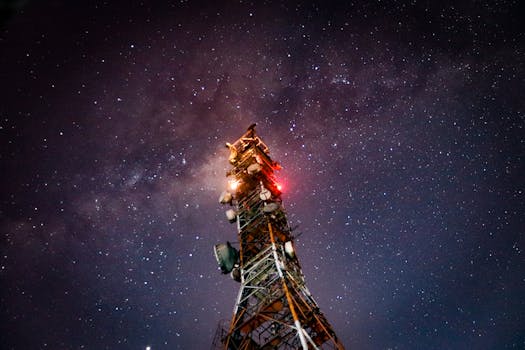
MEO Satellites: Revolutionizing Global Connectivity with Medium Earth Orbit Technology
MEO satellites, or Medium Earth Orbit satellites, are a type of satellite that operates in an orbit approximately 2,000 to 36,000 kilometers above the Earth’s surface. This orbit is higher than Low Earth Orbit (LEO) satellites but lower than Geostationary Earth Orbit (GEO) satellites. MEO satellites are revolutionizing global connectivity by providing faster and more reliable connections than traditional GEO satellites.
History and Development of MEO Satellites

The concept of MEO satellites has been around for several decades, but it wasn’t until recent years that the technology became viable for commercial use. The first MEO satellite was launched in the 1990s, but it wasn’t until the 2010s that the industry began to see significant investment and development in MEO satellite technology. Today, companies such as O3b Networks, SES, and Intelsat are leading the charge in MEO satellite development and deployment.
Benefits of MEO Satellites

MEO satellites offer several benefits over traditional GEO satellites. One of the primary advantages is latency. MEO satellites have a significantly lower latency than GEO satellites, which means that data can be transmitted and received much faster. This is particularly important for applications such as video conferencing, online gaming, and cloud computing, where real-time communication is critical. MEO satellites also offer greater flexibility and scalability than GEO satellites, making them ideal for a wide range of applications, from mobile broadband to enterprise networks.
Applications of MEO Satellites

MEO satellites have a wide range of applications, including mobile broadband, enterprise networks, government communications, and IoT connectivity. They are particularly well-suited for applications that require high-speed, low-latency connectivity, such as video streaming, online gaming, and cloud computing. MEO satellites are also being used to provide connectivity to remote and underserved communities, where traditional terrestrial infrastructure is lacking. In addition, MEO satellites are being used to support a wide range of IoT applications, from smart cities to industrial automation.
Challenges and Future Developments

Despite the many benefits of MEO satellites, there are also several challenges that must be addressed. One of the primary challenges is interference, which can occur when multiple satellites are operating in the same frequency band. To address this challenge, satellite operators are using advanced technologies such as beamforming and frequency reuse. Another challenge is the high cost of launching and operating MEO satellites. To address this challenge, companies are developing new launch vehicles and satellite designs that are more efficient and cost-effective. As the demand for MEO satellite capacity continues to grow, we can expect to see significant investment and innovation in this area, with new technologies and applications emerging in the coming years.
See more:






